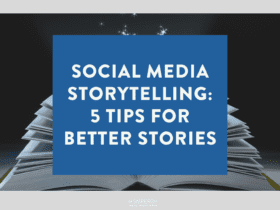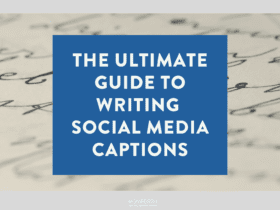The world has changed.
And that means marketing images need to tell a different visual story to avoid looking out of place.
What might have looked familiar and normal a few weeks ago might appear terribly inappropriate or outdated to a post-pandemic audience.
It’s hard to watch a movie or TV show these days and not be constantly reminded of how different the world was just a few weeks ago.
Anything filmed in front of a studio audience pre-pandemic looks like a social distancing anxiety dream, while a movie or TV drama stuffed with international locations and jet set lifestyles is a painful reminder of how parochial and small our lives have become – and are likely to remain for a while to come.
Marketers also add to this visual dissonance with their image choices – particularly when using stock.
Scrolling through LinkedIn, it’s possible to see a number of images attached to posts that could easily use the same image alt tag : “Professional people smiling and/or pointing at a laptop/desktop monitor.” For bonus cliché points, some are also staged in a boardroom with a whiteboard as white and shiny as the teeth on display.
Problem is, that’s no longer the workplace most people recognise.
Pandemic aside, stock image clichés like this make content look generic and far less likely to catch attention in a busy social media feed. At least marketers now have another reason to stop using them.
Office team photos also continue to pop up in brand feeds, which seems particularly tone-deaf right now. This morning, one major brand announced its new CEO on LinkedIn accompanied by a team photo depicting a hundred or more employees crammed shoulder-to-shoulder in a conference room. It must be an old photo, but in today’s context it looks like a contact tracer’s worst nightmare.
To be fair, the last few weeks have seen a slight shift away from “office workers huddled around a laptop” images and towards images of a solitary and more casually dressed person. The person is still behind a laptop and is usually still smiling – although “looking pensive while wearing glasses” is a common variant – but the boardroom is replaced by the home office or sofa.
This shift appears to be largely driven by the avalanche of articles devoted to working from home in recent weeks. But now that initial transition to remote working in lockdown has passed, it’ll be interesting to see if the “home alone” trend continues to steal share from the “boardroom huddle”.
It’s time for an updated visual strategy. When selecting or reassessing your images, ask yourself the following questions:
Do the images depict your business as it was pre-pandemic or as it is today?
If your website normally includes photos of a packed shop or bustling cafe – a nice bit of social proof in times gone by – you might consider replacing them with photos that prepare customers for the experience they’ll find should they visit today. “Yes, we’re open, and here’s how it works now.” Another example might be to include more images of the e-commerce and fulfilment side of your business.
Do the images depict your customers or audience as they were or as they are today?
Your customers need to recognise themselves in your marketing. You may have already revised your customer and audience personas to reflect how behaviours will have changed during the pandemic. If so, check your images are aligned with your updated personas. For example, business professionals in July 2020 are probably more likely to be wearing a comfy sweater than a three-piece suit.
Does the image depict responsible social distancing practices, or mask wearing if appropriate?
Even if your business is situated in a country, state or territory with more relaxed lockdown measures or social distancing rules, your audience may not be. It shouldn’t be surprising that so many people aren’t taking social distancing seriously enough when they’re bombarded with images that imply everything is fine. It’s on all of us to not only observe the rules ourselves but also set the right example for others.
We are visual animals. The human brain sees and interprets an image many, many times faster than it reads the words alongside. And if the image doesn’t grab us – or worse, repels us – we may never read those carefully crafted words.
Are your images telling the right visual story?









LET’S CONNECT